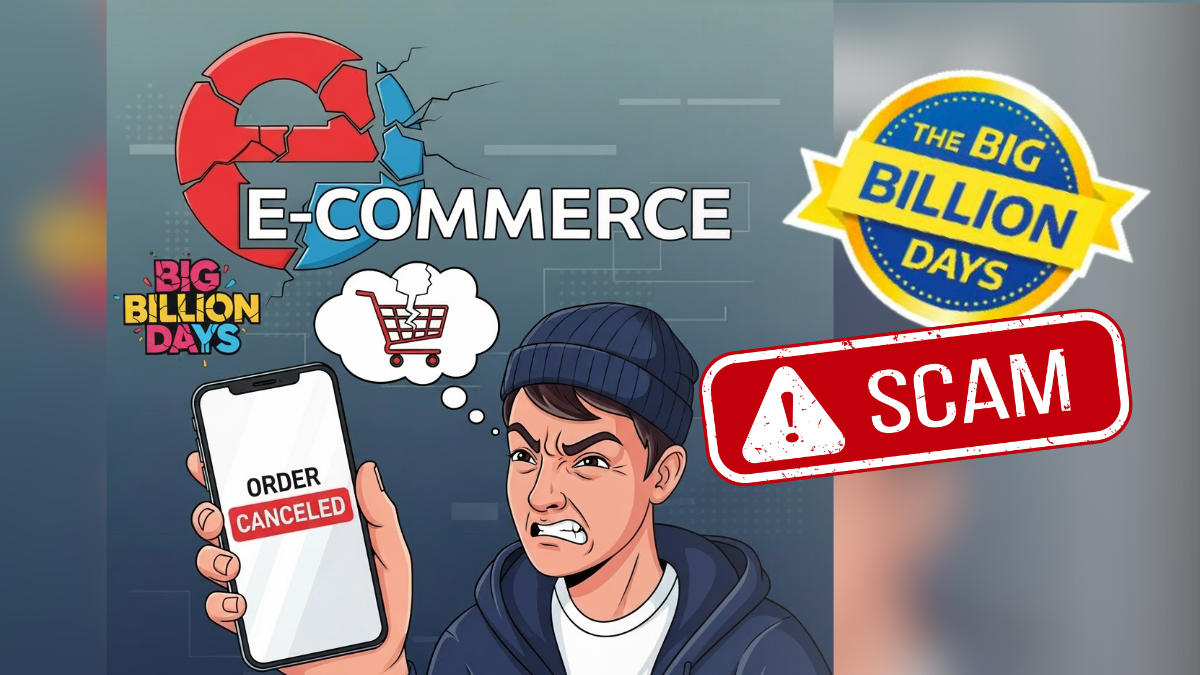Flipkart’s Big Billion Days 2025 is under fire for fake deals and cancelled orders on Pixel 9 and iPhone 16. Learn how to spot the “Big Billion Scam” and protect your purchases.
Flipkart’s annual Big Billion Days 2025 sale, one of India’s most anticipated online shopping events, has once again been marred by controversy. Intended as a festival of savings, the event has instead ignited a firestorm of customer outrage across social media, with buyers accusing the e-commerce giant of false advertising, systemic order cancellations, and deceptive pricing. What was marketed as a grand shopping bonanza has quickly devolved into a case study of broken trust, earning the event the new moniker, “The Big Billion Scam.”
The initial spark of frustration came from the heavily promoted Pixel 9 smartphone. Advertised with a headline-grabbing price of ₹35,000, the deal drew thousands of eager buyers. However, many who added the device to their carts were met with a shocking reality check at checkout: the price had mysteriously jumped to ₹45,000, a full ₹10,000 higher than the advertised offer. This bait-and-switch tactic quickly went viral. “This isn’t a deal, it’s straight-up false marketing,” fumed one user on X (formerly Twitter), their post echoing the sentiments of countless others who felt cheated by what they perceived as a deliberate ploy to lure customers with fake prices. The anger was palpable, and the hashtag #FlipkartScam began trending, with users widely referring to the platform as “Fakekart.”
Even as the Pixel 9 pricing controversy raged, a far larger storm was brewing. Reports from multiple sources, including a detailed account by the Financial Express, revealed that a significant number of high-value orders for the iPhone 16 and iPhone 16 Pro were being abruptly canceled. These devices, listed at what appeared to be attractive “festive steals,” saw buyers complete their purchases and have payments successfully processed, only to receive a dreaded cancellation notice moments later. The reason provided was often a generic “payment failure,” a claim immediately contradicted by screenshots and bank notifications shared by furious customers. For many, the chance to get a new iPhone at a significant discount had turned into a frustrating and baffling experience, further fueling the widespread sentiment of betrayal.
Also read: Best 5G Smartphones Under ₹15,000: Affordable Options for Indian Buyers
The outrage wasn’t limited to a few isolated cases. Buyers of other sought-after electronics, from the Nothing Phone 3 to the iPhone 14, reported similar issues. The pattern was clear: either the advertised discount would vanish at the checkout page, or the order would be canceled hours later, despite a successful transaction. The sheer scale and uniformity of these complaints suggested that these were not mere “glitches” but rather a recurring systemic issue. As customers flooded social media with their grievances, Flipkart’s customer support provided little solace. Many received a standard, unhelpful template response that offered no concrete solution and instead stated a “solution had already been provided,” which only added to the frustration.
How to spot the Scam
While the backlash against Flipkart is growing, the video by Vaibhav Kadnar offers crucial insights into the deceptive tactics used by e-commerce platforms and how consumers can protect themselves. The video identifies three main deceptive patterns:

- Presale Price Spikes: Sellers quietly increase a product’s price a week before a sale, then drop it back to the original price on the sale day, creating the illusion of a discount. A product that was ₹42,999 in August might be listed at ₹47,999 just before the sale and then ‘discounted’ to ₹42,999.
- The Coupon Illusion: A large discount banner may promise significant savings, but even after applying the coupon, the final price can still be higher than the product’s median price in the past few months.
- Bank-Only Prices: The headline price is only available if you use a specific credit card, a fact often hidden in fine print.
The video recommends using a price-tracking tool like “Buy Hatke” to verify deals. This tool provides a price history graph for products, allowing you to see if a price has been artificially inflated before a sale. A genuine deal will show the current price at the lowest point on the 90-day graph.
This isn’t the first time Flipkart has been at the center of such a storm. For years, the Big Billion Days event has faced similar accusations of manipulated prices, bait-and-switch deals, and a lack of accountability. However, this year feels different. The backlash is more organized, amplified by social media users who are not just complaining but also providing detailed evidence—screenshots of canceled orders, price changes, and unhelpful customer support chats. This collective action paints a damning picture of a company prioritizing marketing hype over consumer trust and transparency.
The ongoing controversy raises serious questions about the ethics of e-commerce marketing in India. Are these practices crossing the line into deliberate false advertising? What legal protections are in place for customers when their payments are successful but their orders are canceled without a valid reason? The incidents challenge the very foundation of trust that online platforms are built on. For a company that began as a simple online bookstore in 2007 and grew to become one of India’s largest e-commerce giants, the Big Billion Days was supposed to be a point of pride. Instead, it has become a symbol of a deeper problem.










